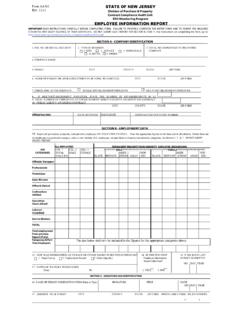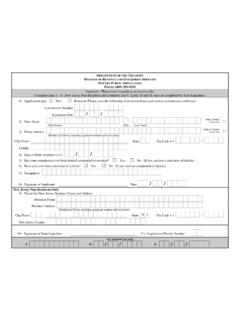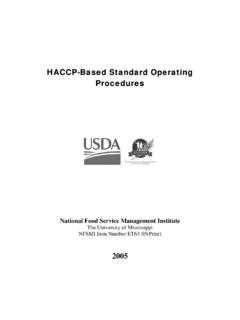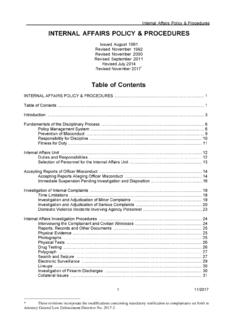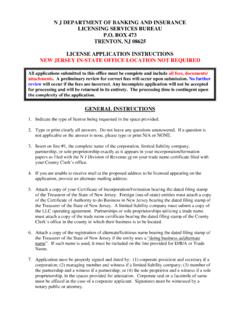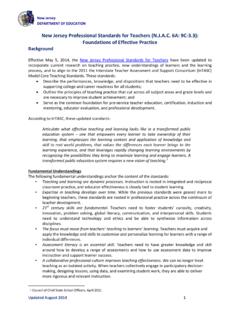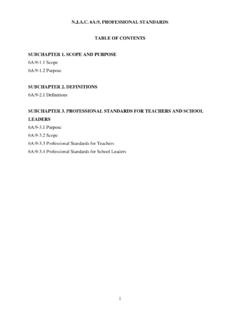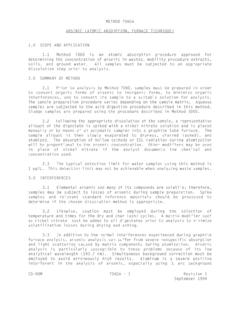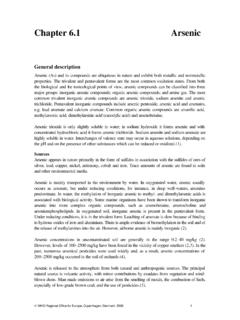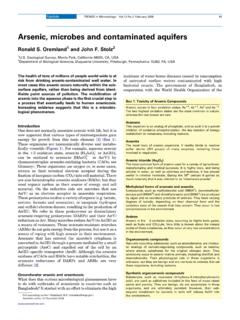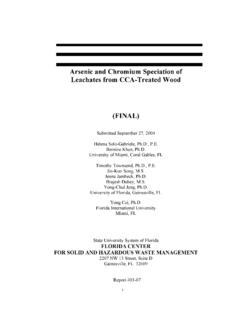Transcription of Environmental Assessment and Risk Analysis Element
1 Environmental Assessment and Risk Analysis ElementWHITE PAPER SUMMARYJ anuary, 2003 AbstractThe question of the potential for exposure to inorganic arsenic in water through dermal contact is important when providingguidance about treatment options to private well owners. If dermal contact with the water is an exposure route of concern,then whole house treatment is required, while if only oral exposure is considered, then treatment at the kitchen tap will besufficient. For this reason, a review of the available information on absorption of inorganic arsenic from water via the dermalroute was Post, , recent reviews, the National Research Council s report, arsenic in Drinking Water (NRC, 1999), and the Agency forToxic Substances and Disease Registry s, ToxicologicalProfile for arsenic (ATSDR, 2000), evaluated the limitedavailable information on dermal exposure to inorganicarsenic.
2 In addition to the studies cited in these reviews,literature searches were performed to locate any additionaland/or more recent information on this the National Research Council (1999) or the Agencyfor Toxic Substances and Disease Registry (2000), nor theadditional literature searches, identified any controlledstudies of inorganic arsenic absorption through human few studies have evaluated the absorption of arsenicthrough the skin of laboratory animals and humans in vitroand laboratory animals in vivo, and limited information isavailable on arsenic exposures in individuals using wells withelevated arsenic levels for bathing, but not (1977) studied the absorption of arsenic in vivoby immersing the tails of female Wistar rats in solutions , , or M radiolabelled sodium arsenate for onehour.
3 The animals were sacrificed at time points from onehour to 10 days after exposure. arsenic was not detected inthe blood or tissues for up to 24 hours after exposure, butincreased in blood, liver, and spleen over the next 5 days. Itwas concluded that the arsenic bound to the skin during theexposure period, and was slowly taken up after the exposureceased. The author calculated that the absorption of arsenicthrough skin at M - M concentrations was ug/cm2 skin x hr - ug/cm2 skin x et al. (1993) studied the skin absorption of inorganicarsenic, using radiolabelled arsenic acid, in vivo in Rhesusmonkeys and in vitro in skin from human cadavers.
4 In themonkey studies, a small volume (5 ul/cm2 skin) of thearsenic-containing solution was applied to the abdominalskin. Two arsenic concentrations were used, which differedby 5 orders of magnitude ( ug/cm2 and ug/cm2).The application site was covered for 24 hours, after whichthe cover was removed and the skin was washed with soapand water. Urine was collected for 7 days, and the percent-age of the dose absorbed was calculated by comparison topercent excreted over 7 days in an intravenous dose (toaccount for non-urinary excretion and retention in the body).Dermal Absorption of Inorganic arsenic from WaterThe extent of percutaneous absorption of arsenic was foundto be for the trace dose and for the high the study using human skin, Wester et al.
5 (1993) appliedthe trace dose used above to human cadaver skin samplesin flow-through diffusion cells. After 24 hours, arsenic wasdetermined in the receptor fluid and in the skin followingwashing with soap and water. It was found that of thedose had entered the receptor fluid and of the doseremained in the skin after washing, indicating a total absorp-tion into the skin of et al. (1994) studied the in vitro absorption ofradiolabelled sodium arsenate in skin from B6C3F1 miceusing flow-through diffusion cells. Sodium arsenate (totalmass 5, 50, or 500 ng) was applied to a skin sample of cm2 in a volume of 100 ul or 250 ul. After 24 hours inthe diffusion chamber, the skin was washed repeatedly withwater and the arsenic in the skin and in the receptor fluidwas determined.
6 It was found that about 62% of the dosewas taken up from the 100 ul volume and about 32% fromthe 250 ul volume, regardless of the dose. When the arsenicwas applied in a 100 ul volume, about 60% of the dosewhich was taken up remained in the skin and the remainderentered the receptor fluid, while when the arsenic wasapplied in 250 ul volume, about 90% of the dose taken upremained in the skin. The authors also studied the absorp-tion of solid arsenate applied in 50 ul of ethanol/waterwhich was quickly evaporated; this condition providedintermediate results between the two water volumes reason for the great variation in absorption resultsbetween the two water volumes tested remain , it is interesting that in all cases tested, the percent-ages absorbed appeared to be independent of the doses ofarsenic administered and dependent upon the way the dosewas applied (100 ul, 250 ul, or solid ).
7 As can be seen from the above discussion, the in vitro resultsof Wester et al. (1993) and Rahman et al. (1994) differgreatly in the percentage of arsenic absorbed. Thesedifferences may be due to species differences in skinabsorption, as mouse skin has been found to be morepermeable in vitro than human cadaver skin to manychemicals (Rahman et al., 1994) and/or to differences inhydration of the skin, as the arsenic was applied in a greatlydiffering volume in the two (2002) estimated the potential dermal absorption by a childbathing in water containing arsenic , using permeability constantsfor arsenic derived from the rodent studies of Rahman et al.
8 (1994) and Dutkiewicz (1977). In addition, these calculationswere independently confirmed by the present author. Since thestudies of Rahman et al. (1994) and Dutkiewicz (1977) showedabsorption approximately 10-fold higher than the Rhesus monkeyand human cadaver skin studies of Wester et al. (1993), they arelikely to provide overestimates, rather than underestimates, ofhuman absorption. It was estimated that, from a half hour bath, achild would absorb less than ug arsenic at 10 ug/L, less than1 ug at 100 ug/L, and less than 10 ug at 1000 ug/L. In contrast,80-90% of an oral dose of inorganic arsenic is absorbed inhumans or experimental animals (NRC, 1999).
9 Assuming a childingests one liter of water per day, the half-hour bath is estimatedto contribute less than 1% to the exposure from information on the potential for dermal exposure toarsenic through water comes from a study of an Alaskanpopulation with high arsenic levels in their wells (Harrington et al.,1978). The study involved 59 homes and 232 subjects, witharsenic levels in their wells ranging from 1 ug/L to 2450 were classified as bottled water drinkers (average wellAs level 345 ug/L + 688 ug/L), switchers who had begun todrink bottled water in the three months prior to the study (averageAs level 498 ug/L + 385 ug/L), well water drinkers with arsenicless than 100 ug/L (average As level 31 ug/L + 33 ug/L), and wellwater drinkers with arsenic above 100 ug/L (average As level 401ug/L + 318 ug/L).
10 Levels of arsenic in urine, hair, and nails weremeasured. It was found that the urinary arsenic levels of thebottled water drinkers and the recent switchers did not differ fromthe levels in the group with well arsenic levels below 100 ug/L,despite an average well arsenic level more than 10-fold higherthan the low well arsenic group. However, the hair arsenic levelsof the bottled water drinkers and switchers were similar to thosewith high well arsenic levels who did not drink bottled water, andabout 10-fold higher than those with low arsenic well results suggest that there is a low degree of skin absorp-tion of arsenic , but that arsenic may bind externally to hair Wisconsin Department of Natural Resources recentlycompleted a study of health effects of arsenic in drinking water(Knobeloch, 2002).

